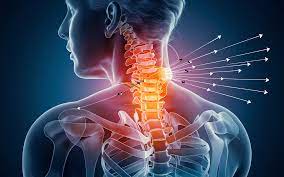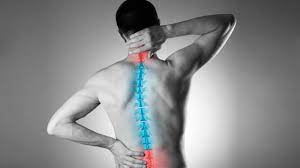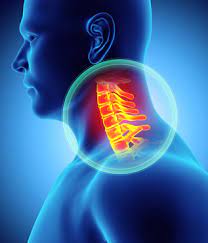

Ever feel like your head’s carrying the weight of the world—literally?
That’s because your cervical spine, the unsung hero of neck support and movement, often takes the brunt of bad posture, injuries, and aging.
When things go out of whack, manual therapy comes to the rescue.
It is a hands-on approach performed by skilled professionals to get your spine back in line, ease pain, and restore mobility.
As per the Journal of Manual & Manipulative Therapy, manual techniques have been proven to work wonders in relieving the discomfort caused by cervical misalignment and boosting overall function.
Whether you are dealing with tech neck or post-injury stiffness, manual therapy offers a promising solution.
In this article, BestForwardHeadPostureFix shall break down exactly how manual therapy helps realign the cervical spine—covering the science, the benefits, and what you need to know before diving in.
Let’s get cracking!
Article Index
- Understanding Cervical Spine Misalignment
- Mechanisms of Manual Therapy in Cervical Realignment
- Common Manual Therapy Techniques for the Cervical Spine
- Benefits of Manual Therapy for Cervical Realignment
- Scientific Evidence Supporting Manual Therapy
- Conditions That Benefit from Cervical Spine Manual Therapy
- FAQs on Manual Therapy for Fixing Text Neck
- Considerations and Precautions in Manual Therapy
- Conclusion
Understanding Cervical Spine Misalignment
The cervical spine, made up of seven vertebrae (C1-C7), plays a vital role in supporting the head and enabling neck movement.
However, it is highly susceptible to misalignment due to several everyday factors, including:
- Poor Posture: Long hours spent hunched over screens can cause forward head posture, putting excessive strain on the neck.
- Trauma: Injuries such as whiplash from car accidents can disturb the spine’s natural alignment.
- Degenerative Changes: Conditions like osteoarthritis and disc degeneration gradually wear down spinal structures over time.
- Muscle Imbalances: Weak or overly tight neck muscles can tug the spine out of proper alignment.
According to a study in the Spine Journal (2023), cervical misalignment is a major contributor to chronic neck pain, tension headaches, and reduced mobility. Addressing these issues early through targeted interventions like manual therapy can help restore alignment and prevent long-term complications.
Mechanisms of Manual Therapy in Cervical Realignment
Manual therapy helps realign the cervical spine by addressing both structural and neurological factors that contribute to misalignment.
The process involves several key physiological mechanisms that work together to restore proper function and relieve discomfort.
- Joint Mobilization: This technique involves applying gentle, passive movements to the cervical joints, helping to restore their natural range of motion and alignment. By gradually increasing mobility, joint mobilization reduces stiffness and enhances overall neck function.
- Soft Tissue Manipulation: Muscle tension often pulls the cervical spine out of alignment. Manual therapy techniques such as massage and myofascial release target tight or overactive muscles, allowing the vertebrae to return to their correct position naturally. This also helps improve circulation and flexibility.
- Neurophysiological Effects: Manual therapy stimulates mechanoreceptors—sensory receptors in the muscles and joints that provide feedback to the brain. As per The Journal of Orthopedic & Sports Physical Therapy, this stimulation helps reduce pain perception and increases proprioceptive awareness, allowing individuals to maintain better posture.
- Spinal Decompression: Gentle traction techniques create space between the vertebrae, relieving pressure on compressed nerves and discs. This method is particularly effective for alleviating symptoms related to conditions like herniated discs and nerve impingement.
Manual therapy, therefore, offers a comprehensive approach to improving cervical spine function by addressing biomechanical and neurological aspects simultaneously.
Common Manual Therapy Techniques for the Cervical Spine
Manual therapy employs various techniques to address cervical spine misalignment, each targeting specific components of the musculoskeletal system to restore balance and function.
Some of the most commonly used methods include:
- Cervical Mobilization:
This technique involves slow, rhythmic passive movements that gently stretch and mobilize the cervical joints. It helps to restore normal joint mechanics, increase flexibility, and reduce stiffness. Mobilization is often used for individuals experiencing mild to moderate neck pain and restricted movement due to poor posture or injury. - Cervical Manipulation:
High-velocity, low-amplitude thrusts are applied to specific cervical vertebrae to enhance mobility and alleviate pain. According to research published in the Manual Therapy Journal, this technique has shown significant improvements in cervical range of motion and pain reduction, particularly in cases of chronic neck discomfort. - Myofascial Release:
This technique uses gentle, sustained pressure on the myofascial tissues to release restrictions contributing to misalignment. It is particularly effective in reducing muscle tightness and improving soft tissue flexibility, helping the spine return to its natural alignment. - Trigger Point Therapy:
By applying direct pressure to muscle knots or trigger points, this technique helps relieve tension and referred pain. Studies suggest that releasing trigger points enhances cervical mobility and reduces muscular discomfort. - Traction Therapy:
In this approach, a gentle pulling force is applied to the cervical spine to create space between the vertebrae. This relieves nerve compression and promotes better spinal alignment, making it beneficial for conditions such as herniated discs or pinched nerves.
Each of these techniques, when applied appropriately, contributes to the effective management of cervical spine misalignment and overall neck health.
Benefits of Manual Therapy for Cervical Realignment
Manual therapy provides a range of benefits for individuals experiencing cervical spine misalignment, making it a valuable approach for managing neck pain and dysfunction. Some key advantages include:
- Pain Reduction: Manual therapy helps alleviate discomfort by releasing muscle tension, improving joint mobility, and addressing the underlying causes of pain. Techniques such as mobilization and soft tissue manipulation can significantly decrease pain intensity.
- Improved Mobility: Restricted movement caused by joint stiffness and muscle tightness can be effectively addressed through manual therapy, restoring natural range of motion and flexibility.
- Enhanced Postural Alignment: Correcting cervical misalignment supports proper head and neck positioning, which reduces strain on surrounding muscles and joints.
- Reduced Muscle Spasms: By targeting trigger points and releasing fascial restrictions, manual therapy helps in easing muscle spasms that contribute to ongoing tension.
- Non-Invasive Treatment: As a conservative approach, manual therapy provides a safe and effective alternative to surgical interventions for many patients.
According to a systematic review published in the British Journal of Sports Medicine, manual therapy has been found to be an effective, evidence-based treatment for managing cervical spine dysfunction and improving quality of life.
Scientific Evidence Supporting Manual Therapy
Several scientific studies support the efficacy of manual therapy for cervical spine realignment:
- A study in the Journal of Manipulative and Physiological Therapeutics reported that spinal manipulation significantly improved neck pain and function in patients with cervical misalignment.
- Research in BMC Musculoskeletal Disorders found that mobilization techniques effectively enhance range of motion and reduce pain.
- A clinical trial published in Physiotherapy Research International highlighted the benefits of combining manual therapy with exercise for long-term cervical spine health.
These findings reinforce the role of manual therapy as a validated approach for addressing cervical spine issues.
FAQs on Manual Therapy for Fixing Text Neck
Q-1. How does manual therapy actually “realign” the neck?
A-1. Think of your cervical spine like a stack of coffee cups balanced by muscles and fascia. When some cups twist or tip from stress, screen time, or past strains, tissues tighten and joints lose their glide. Manual therapy uses gentle joint mobilizations, soft-tissue work, and traction to reduce stiffness and restore that glide. As motion evens out, muscles stop over-guarding and your head naturally recenters over your shoulders. Example: after a week on a laptop, a few bouts of graded C5–C7 mobilization can free rotation so you no longer turn your whole torso to check blind spots.
Q-2. What’s the difference between soft-tissue work and joint mobilization?
A-2. Soft-tissue work (myofascial release, trigger point pressure) treats the “guy wires”—muscles and fascia that pull vertebrae off balance. Joint mobilization (graded oscillations or sustained holds) addresses the “hinges”—facet joints that can get sticky. Used together, they’re like loosening a stuck zipper while relaxing the fabric around it. Example: a tight upper trapezius and levator scapulae can elevate the shoulder and hike the neck; releasing them first makes a gentle C3–C4 mobilization far more effective—and the head sits more neutrally without forcing it.
Q-3. Can manual therapy help forward head posture?
A-3. Yes—especially as a springboard to better habits. Forward head posture often mixes stiff upper thoracic segments, shortened suboccipitals, and weak deep neck flexors. A therapist might open the upper back with thoracic mobilizations, ease suboccipitals with precise pressure, and apply light traction to reduce compressive load. You’ll usually follow with chin-tuck practice and scapular work so the change “sticks.” Example: Priya’s neck felt jammed at her desk; after two sessions plus daily 60-second chin tucks, her monitor checks no longer trigger that nagging base-of-skull ache.
Q-4. How long do results last—and what should I do afterward?
A-4. Manual therapy often gives immediate relief and freer motion, but durability depends on what you do next. Pair it with strength (deep neck flexors, lower traps, serratus anterior), mobility (thoracic extension), and daily ergonomics (screen at eye level, elbows by your sides). Think of therapy as “unlocking” range and your routine as “saving” it. Example: Arun noticed headaches return after long commutes; adding a travel neck support, steering-wheel posture cues, and a two-minute evening routine kept his gains between sessions. If symptoms persist, check in for a tailored plan.
Conditions That Benefit from Cervical Spine Manual Therapy
Manual therapy is an effective approach for managing various cervical spine conditions that can impact daily life and overall well-being.
Some of the common conditions that benefit from manual therapy include:
- Cervical Radiculopathy: This condition occurs due to nerve compression in the cervical spine, resulting in radiating pain, numbness, and weakness in the arms and shoulders. Manual therapy helps by relieving pressure on the affected nerves.
- Cervical Spondylosis: Age-related degeneration of spinal discs can lead to stiffness and pain. Manual therapy techniques improve joint mobility and reduce discomfort.
- Whiplash-Associated Disorders: Sudden trauma, such as in car accidents, can cause misalignment and stiffness. Manual therapy assists in restoring normal function and reducing pain.
- Cervicogenic Headaches: Neck dysfunction can trigger headaches, and manual therapy addresses the underlying musculoskeletal issues to provide relief.
- Postural Syndrome: Poor posture from prolonged screen use can lead to chronic neck pain, which manual therapy can correct by restoring proper alignment.
According to the Journal of Back and Musculoskeletal Rehabilitation, manual therapy has shown significant effectiveness in treating these conditions, helping patients regain mobility and reduce pain.
Considerations and Precautions in Manual Therapy
While manual therapy provides significant benefits for cervical spine conditions, it is essential to follow certain precautions to ensure safe and effective treatment. Below are key considerations to keep in mind:
1. Proper Assessment
A thorough evaluation by a qualified healthcare professional is crucial before starting manual therapy. This assessment helps determine the root cause of the issue and identify the most appropriate treatment approach.
2. Contraindications
Not all individuals are suitable candidates for manual therapy. Conditions such as fractures, severe osteoporosis, infections, or inflammatory disorders may require alternative treatment methods to avoid potential risks.
3. Individualized Approach
Manual therapy should be tailored to each person’s specific condition, tolerance level, and medical history. A personalized approach helps minimize discomfort and ensures optimal outcomes.
4. Integration with Exercise
Combining manual therapy with strengthening and mobility exercises is essential for long-term benefits. Exercise complements the treatment by improving muscle strength, enhancing flexibility, and preventing recurrence of misalignment.
5. Regular Follow-Ups
Continuous monitoring through follow-up visits is vital to track progress and adjust the treatment plan as needed. Regular assessments help maintain spinal health and prevent future complications.
According to the American Physical Therapy Association, following these precautions enhances the safety and effectiveness of manual therapy for cervical spine conditions.
Conclusion
Manual therapy is an effective approach to restoring proper alignment of the cervical spine, enhancing mobility, and alleviating pain.
By employing hands-on techniques such as joint mobilization, spinal manipulation, and soft tissue release, manual therapy directly targets the underlying causes of spinal misalignment. These techniques help reduce muscle tension, improve joint function, and promote better posture, contributing to overall spinal health.
Scientific studies confirm the effectiveness of manual therapy in managing cervical spine issues, making it a reliable and non-invasive treatment option for individuals dealing with chronic neck pain and mobility restrictions.
For the best outcomes, manual therapy should be part of a well-rounded treatment plan that includes postural corrections, strength-building exercises, and healthy lifestyle changes.
A thorough assessment by a qualified healthcare professional ensures the therapy is applied correctly and tailored to individual needs. With the right approach, manual therapy can provide long-lasting relief and significantly enhance quality of life.
References:


